lanet Earth is incredibly rich in biodiversity, to the extent that even its most inhospitable places—where there is no sunlight, barely any oxygen, frigid temperatures close to 0°C, and immense water pressure—harbor life. The deep ocean, a realm largely untouched by humans, is home to some of the most bizarre and fascinating creatures ever discovered.
In this article, we’ll explore 13 extraordinary deep-sea animals and the remarkable adaptations that allow them to survive in such extreme environments.
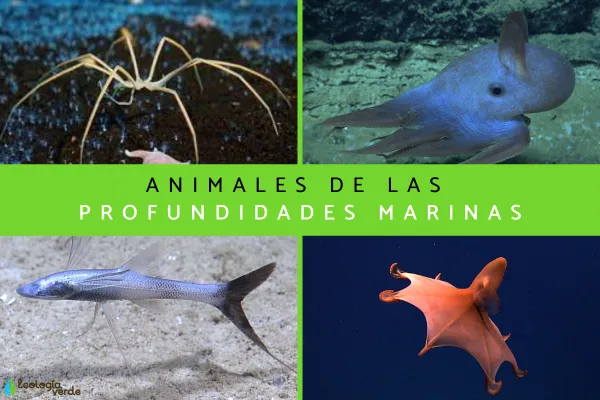
Anglerfish are among the most iconic deep-sea predators. They are part of the Ceratiidae family and are sometimes called “sea devils” due to their eerie appearance and predatory tactics. Female anglerfish have a glowing lure on their heads that attracts prey in the darkness. Males are much smaller and fuse with the females during mating, essentially becoming parasitic mates—sharing blood vessels and even losing their own organs.
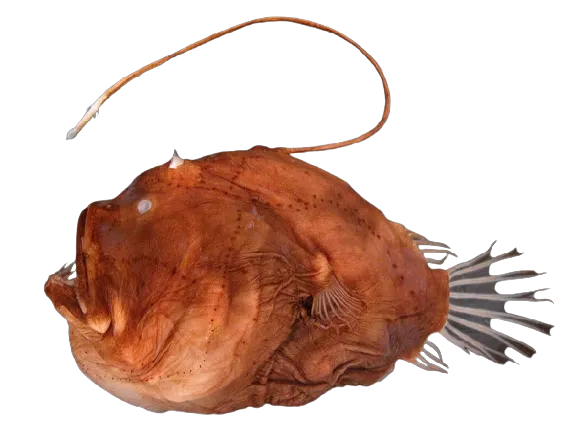
Despite its fearsome name, the vampire squid is relatively passive. It doesn’t produce ink like its relatives but emits bioluminescent displays to confuse predators. It feeds on marine snow—dead plankton and organic debris—using a sticky web-like membrane that stretches between its arms. Its deep red mantle and luminescent photophores give it a ghostly, vampire-like appearance.
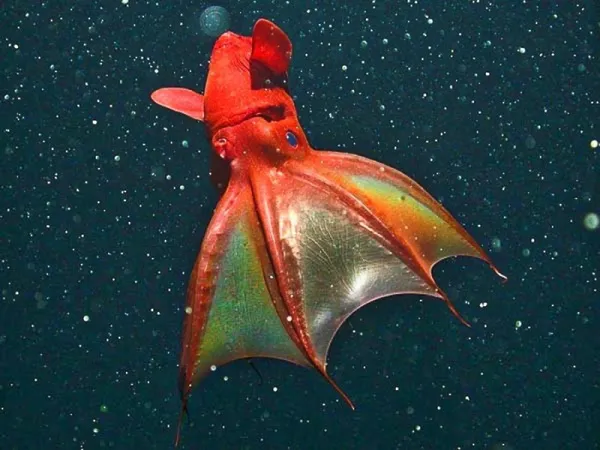
Living at depths of 500 to 3,900 meters, the black dragonfish produces red bioluminescent light, which is invisible to its prey such as shrimp. It has a disproportionately large mouth and can grow up to 25 centimeters long. Its unique light gives it a stealthy hunting advantage in the pitch-black deep sea.
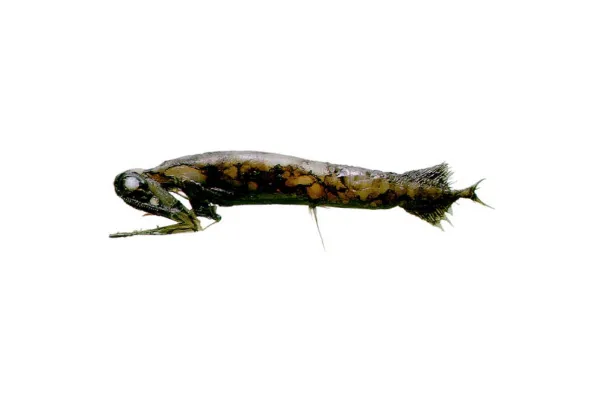
Though they resemble plants, giant tube worms are segmented annelid worms that live near hydrothermal vents. They have no eyes, no mouth, and no digestive system. Instead, they host symbiotic bacteria in their tissues that convert sulfur compounds from the vents into energy. These worms can grow up to 2 meters long and live over 150 years.
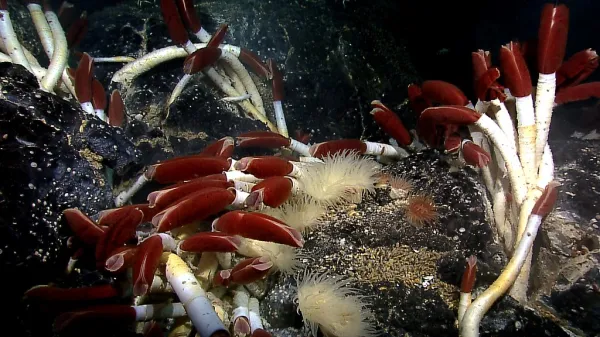
This terrifying fish has a long, thin body and oversized, transparent fangs that stick out even when its mouth is closed. It uses light-emitting photophores to navigate and avoid predators. It is commonly found in tropical and subtropical deep waters and can reach up to 35 centimeters in length.
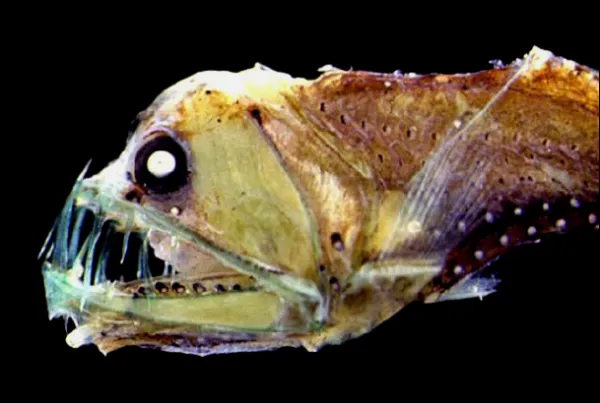
Lanternfish are among the most abundant vertebrates on Earth. Though only about 11 centimeters long, they have large eyes and numerous bioluminescent organs used for communication and camouflage. They're essential to the oceanic food chain and perform nightly vertical migrations.
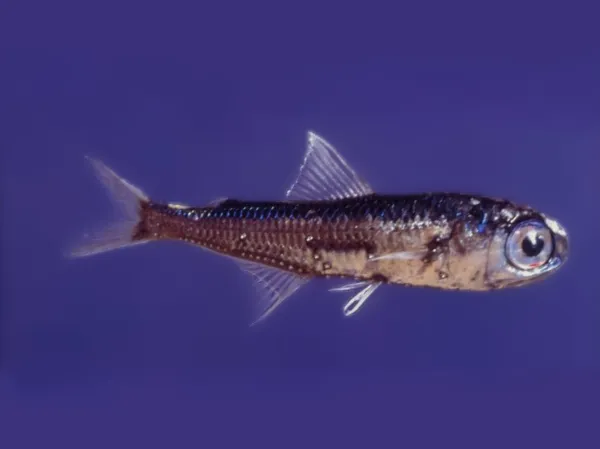
Named after Disney’s Dumbo due to their ear-like fins, these adorable cephalopods inhabit depths of up to 5,000 meters. They are small (about 20 cm), round-bodied, and have webbed arms with sensory suckers. They swallow prey whole and digest it internally.
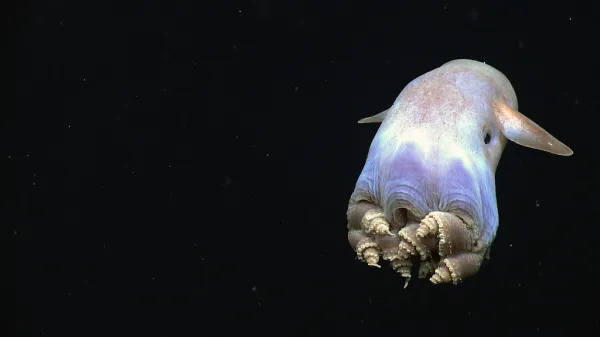
Although they resemble spiders, sea spiders belong to a different group entirely. Deep-sea species can grow quite large, with leg spans reaching up to 50 centimeters. The Colossendeis megalonyx is a notable example found in sub-Antarctic waters. There are over 1,000 known species across 86 genera.
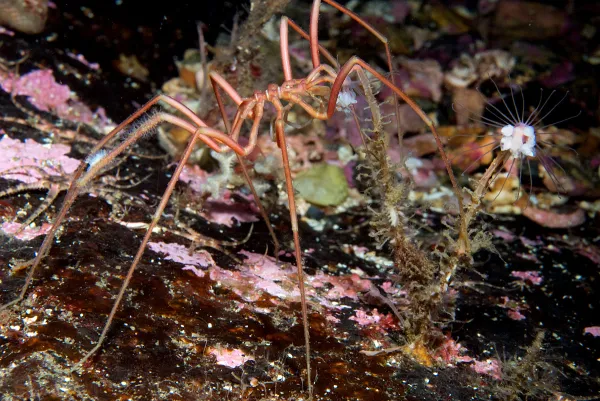
This type of anglerfish is a fierce predator with a huge mouth, glowing lure, and bizarre appendages. The Caulophryne jordani, for example, features spine-like fins, light-emitting filaments, and small eyes. Its mouth can stretch wide enough to swallow prey twice its size. It lives at depths of up to 1,500 meters.
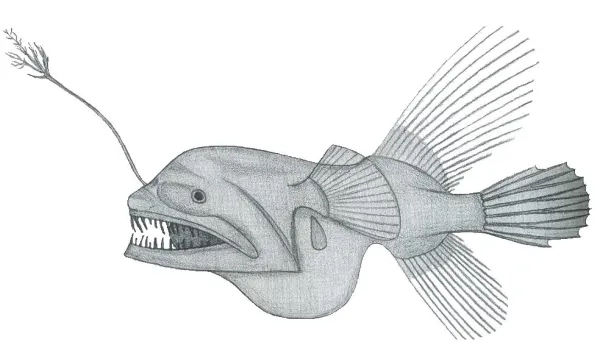
This lizardfish lives in muddy seabeds and has long, veil-like pelvic fins and threadlike pectoral fins that match its 37-centimeter body length. These fins are used to sense and catch zooplankton in the murky deep-sea waters.
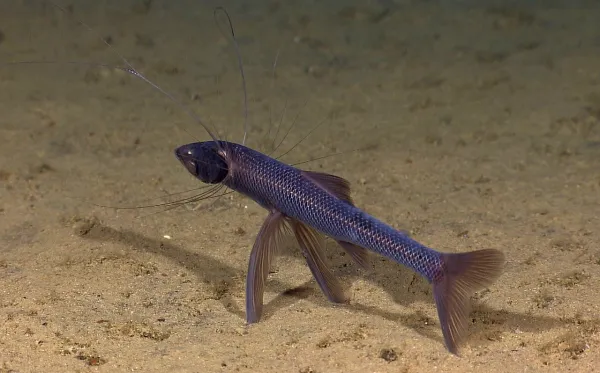
Siphonophores are colonial cnidarians related to jellyfish. The Apolemia ianosa, found 1,000 meters deep off Australia, can reach up to 4 meters in length and emits bioluminescence. It ensnares prey like crustaceans and small fish with its venomous, net-like tentacles.
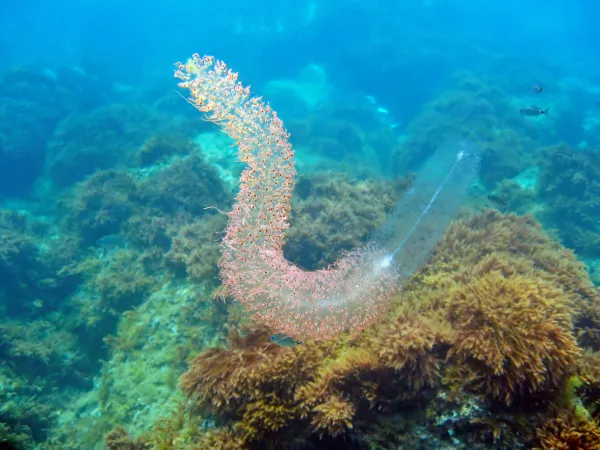
Possibly the largest invertebrate on Earth, the colossal squid can grow up to 15 meters. Found in the icy depths of the Southern Ocean, it floats using high levels of ammonia in its tissues. It has powerful arms with hooks and suckers, and its bioluminescent eyes help it locate prey in the dark.
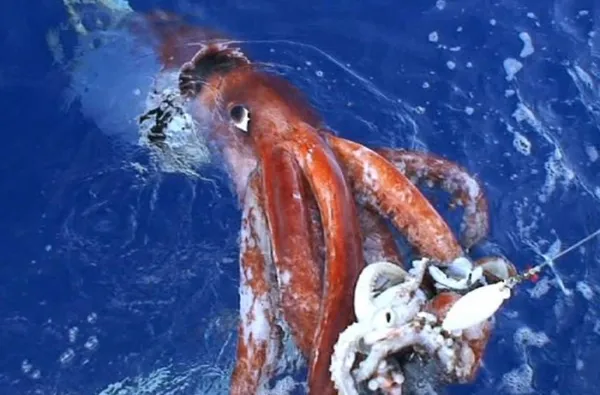
Not to be confused with regular lanternfish, this deep-sea anglerfish is covered in spines and has glowing eyes and lures, thanks to bioluminescent bacteria. It uses its light-producing features for communication and hunting in total darkness.
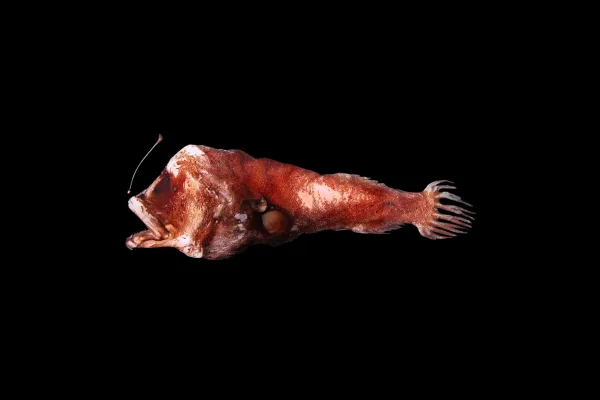
Low Metabolic Rates: Many deep-sea animals have adapted to scarce food by conserving energy and surviving long periods without eating.
Minimal Oxygen Requirements: Their physiology is tuned to thrive with very low oxygen levels.
Reduced or Absent Organs: Eyes and other organs may be minimized or lost due to the complete absence of light.
Bioluminescence & Sensory Extensions: These help detect prey or mates in total darkness.
Vertical Migration: Some species rise at night to feed and descend by day to avoid predators.
Deep-Sea Gigantism: Some invertebrates grow unusually large—possibly due to cold temperatures slowing metabolism and increasing lifespan.
If you're fascinated by ocean life, you may also enjoy reading about the World’s Most Dangerous Marine Animals or exploring more about Bizarre Wildlife from around the globe.
Literature
Jungbauer, W. Randler, C., Reck, M., and Stripf, R. (2005). Netzwerk biology 1. Braunschweig: Schrödel
Beatty, R., Beer, A., & Deeming, C. (2010). The Book of Nature. Great Britain: Dorling Kindersley
National Geographic Editorial Staff. (2010). Snuff. Available at: https://www.nationalgeographic.es/animales/rape
National Geographic. (2017). Vampire squid. Available at: https://www.nationalgeographic.es/photography/2017/03/calamares-vampiro?image=10960.600x450
Monterey Bay Aquarium Research Institute. (2020). Apolemia siphonophore. Available at: https://www.mbari.org/products/apolemia/
BBC. (2020). Siphonophore, the surprising 45-meter-long, self-producing organism found on the Australian seafloor. Available at: https://www.bbc.com/mundo/noticias-52289163
animal tags: Deep Sea Animals
We created this article in conjunction with AI technology, then made sure it was fact-checked and edited by a Animals Top editor.